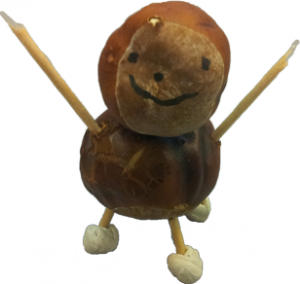Alte Homepage
Übung/Spiel - Datenbank Eintrag ... Parrameter lesen + Datensatz anzeigen:
Alte Homepage:
weiter geht´s
Neue Homepage
Der Eintrag Nr. 37 wird gelesen.
Meinungen & Argumente | Erstellt von 0 am 03.01.2016 | 37 |
Alter: von 9 bis 99
Schwierigkeit: 2
Dauer: 30 min.
Quelle: Lesson Plan Ideas (App für Android - info@ilessonplanner.co.uk/)
Beschreibung:
1) Darstellungen mit verschiedenen Konzepten, die zum Lernthema passen, werden im Raum verteilt.
2) SuS sollen nun zu dem Konzept gehen, das für sie am wichtigsten erscheint oder das sie einfach bevorzugen ("zu etwas stehen").
3) Ein Repräsentant jeder Gruppe stellt nun den anderen vor, warum ihr Konzept das beste ist und erlauben den anderen SuS, die Gruppen zu wechseln.
4) Wenn einE SoS wechselt, soll er/sie erklären, warum er/sie seine/ihre Meinung gewechselt hat?
5) Dann wird ein Konzept entfernt und erklärt, dass dies nun kein gültiges Konzept mehr ist und die SuS müssen sich aus den übrigen eines aussuchen.
6) Es werden immer mehr Konzepte entfernt, bis nur mehr wenige übrig bleiben - die SuS sollen ihre Entscheidungen erklären.
z.B. Kunst
Verschiedene Bilder werden gezeigt und die SuS entscheiden, welches am besten gefällt.
Psychologie
Techniken des Umgangs mit Verspottung werden gezeigt und die SuS entscheiden, welche die effektivste ist.
Wissenschaft
Gesundheitsfolgen von Übergewicht werden verteilt und die SuS entscheiden, welche die schlechteste für junge Menschen sein könnte
Originaldokument:
1) Stick up sheets of paper around the room which represent different concepts within the topic.
2) Ask students to go and stand by the concept which they think is the most important or they prefer.
3) Select a student from each group to justify why their concept is the best, and allow students to move around the room if they change their mind.
4) If a student does move, ask them to explain why they have moved.
5) Then go to one of the sheets of paper and remove it, explaining that it is no longer an option and students must now select another concept to stand next to.
6) Quiz students on their new choices, and repeat until there are only a few options left.
E.g. Art
Display different paintings around the room and ask students to decide which one they prefer.
PSHE
Display different techniques for coping with bullying and ask students to choose which is the most effective.
Science
Display different health effects of obesity around the room and ask students to decide which is the most debilitating to a young person
2) SuS sollen nun zu dem Konzept gehen, das für sie am wichtigsten erscheint oder das sie einfach bevorzugen ("zu etwas stehen").
3) Ein Repräsentant jeder Gruppe stellt nun den anderen vor, warum ihr Konzept das beste ist und erlauben den anderen SuS, die Gruppen zu wechseln.
4) Wenn einE SoS wechselt, soll er/sie erklären, warum er/sie seine/ihre Meinung gewechselt hat?
5) Dann wird ein Konzept entfernt und erklärt, dass dies nun kein gültiges Konzept mehr ist und die SuS müssen sich aus den übrigen eines aussuchen.
6) Es werden immer mehr Konzepte entfernt, bis nur mehr wenige übrig bleiben - die SuS sollen ihre Entscheidungen erklären.
z.B. Kunst
Verschiedene Bilder werden gezeigt und die SuS entscheiden, welches am besten gefällt.
Psychologie
Techniken des Umgangs mit Verspottung werden gezeigt und die SuS entscheiden, welche die effektivste ist.
Wissenschaft
Gesundheitsfolgen von Übergewicht werden verteilt und die SuS entscheiden, welche die schlechteste für junge Menschen sein könnte
Originaldokument:
1) Stick up sheets of paper around the room which represent different concepts within the topic.
2) Ask students to go and stand by the concept which they think is the most important or they prefer.
3) Select a student from each group to justify why their concept is the best, and allow students to move around the room if they change their mind.
4) If a student does move, ask them to explain why they have moved.
5) Then go to one of the sheets of paper and remove it, explaining that it is no longer an option and students must now select another concept to stand next to.
6) Quiz students on their new choices, and repeat until there are only a few options left.
E.g. Art
Display different paintings around the room and ask students to decide which one they prefer.
PSHE
Display different techniques for coping with bullying and ask students to choose which is the most effective.
Science
Display different health effects of obesity around the room and ask students to decide which is the most debilitating to a young person
------------
Ende der Seite
